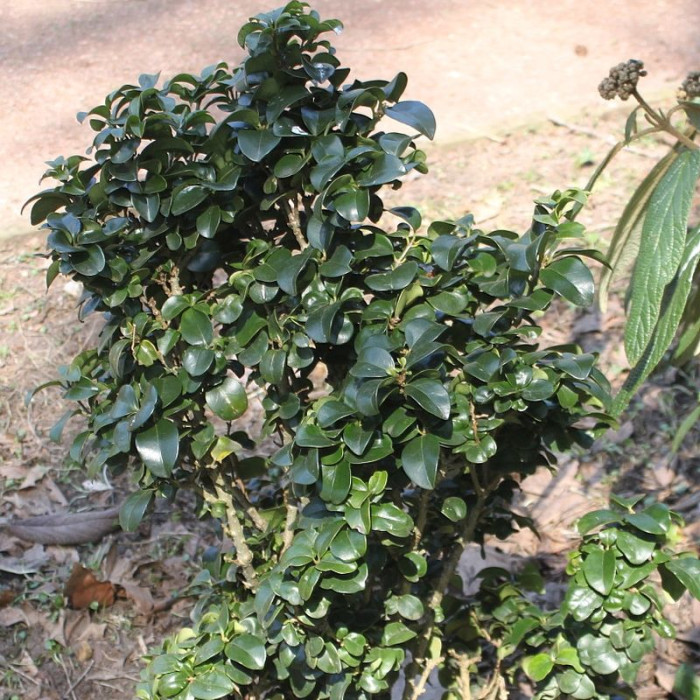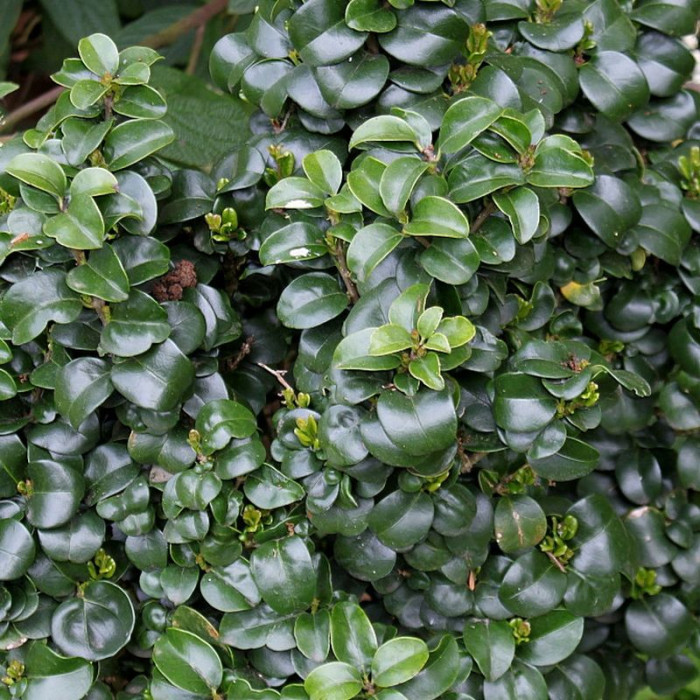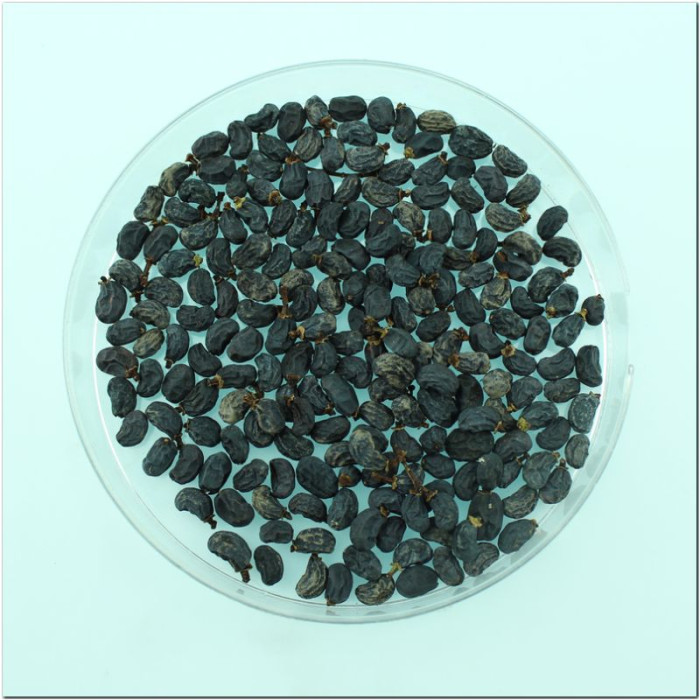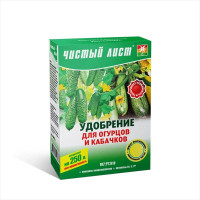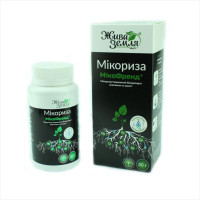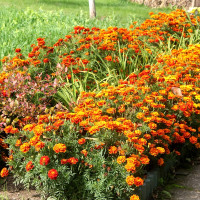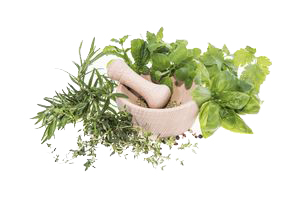Japanese privet / Ligustrum japonicum - found naturally in South Korea and Japan. Very close to shiny privet and often mixed with it. An evergreen shrub, but of smaller height (no more than 3-4 meters), with smooth branches and a compact crown, short, leathery, dark green leaves and smaller flower inflorescences. Flowering period is shorter. It grows slower than brilliant privet, but is more shade-tolerant and demanding of soil moisture. Tolerates excess lime, frost-resistant. Tolerates haircuts and urban conditions well. Used in small groups on the edges, in hedges, single plantings; its standard, spherical-shaped specimens are good in alley and street plantings. In culture since 1845.
Japanese privet loves the sun, but also grows well in partial shade. Ordinary garden soil is suitable, even with the addition of lime, but raw heavy clay with an acidic reaction is undesirable. All privets tolerate drought successfully, especially common privet. They grow quickly and tolerate cutting well. The most winter-hardy Privet is easily restored after freezing; it is advisable to cover the rest or at least bend them to the ground for the winter. Privet is propagated by cuttings, layering, root suckers, grafting and seeds. For commercial production of seedlings, propagation by seeds and cuttings are most often used. For industrial mass propagation of planting material (not varietal material), seeds are used. The fruits ripen in mid-October, each of them contains 1-4 seeds (the bushes begin to bear fruit from the age of 6). Benign seeds are selected from ripe fruits, washed from the pulp and soaked in water. In this case, defective seeds float to the surface and are removed, leaving only viable ones.
To accelerate germination and increase seed germination, stratification is used. When sowing in autumn «before winter», privet seeds, being under the snow in winter, undergo natural stratification and therefore germinate better. If the sowing of these plants is delayed until spring, then they need cold stratification for 6 months. The seeds are mixed with clean sand and peat, moistened and placed in pots or boxes in a layer of 30-40 cm. There they are kept until spring at a temperature close to 0°C.
Sowing seeds in open ground is used to obtain a large number of seedlings.
If a small batch of seedlings is needed, the seeds are sown in boxes located in film or glass greenhouses with artificial heating, or, in extreme cases, indoors. The seed boxes are filled with light fertile soil, consisting of equal parts of humus, peat and river sand. The top layer of the substrate is covered with a 1 cm layer of sand. Before sowing, the seeds are soaked in water.
During the germination period, boxes with crops are regularly watered using a watering can with a fine mesh, and make sure that the seeds are always sprinkled with soil substrate. Watering is carried out carefully so that a strong stream does not wash out the seeds located on the surface. If this happens, the seeds need to be deepened into the soil again. Seedlings with developed leaves carefully dive into open ground at the end of the season or next spring.
Growing privet from seeds: sowing is carried out either in mid-October or early May. Shoots appear in June, and only a year later (at two years of age) are the seedlings ready for sale. And annual seedlings of seedlings are grown by planting them in containers (plastic containers with a volume of 0,3–0,5 l). The containers are filled with fertile substrate prepared from a mixture of humus, leaf soil and river sand in equal parts. At the age of 2-3 years, when the seedlings reach a height of 40-60 cm, you can begin to sell them.
Growing privet by cuttings: to obtain varietal planting material, another propagation method is used - cuttings. Privet is very easily propagated by summer cuttings taken at the end of flowering, and gives 85-100% rooting. It can also be propagated by lignified (winter) cuttings, but the rooting result will be much worse.
Only large, well-developed mature shoots are cut into cuttings, which break with a crunch when bent. The length of the cuttings is 8-12 cm, with a diameter of 0,7-1 cm. If the cuttings are more mature, you can treat them with a 0.01% solution of IBA (indolylbutyric acid).
Cuttings are cut from the end of June and throughout July. Roots appear within 1-2 weeks, and after 2-3 months a powerful root system develops. Rooted cuttings are grown; plants are ready for sale only at 2-3 years of age. The cuttings are planted in greenhouses under glass in well-washed coarse sand, sprinkled in a layer of 3–5 cm on the main substrate of a turf mixture with sand, to a depth of 5 cm, at an angle of 45º. During the rooting period, maintain a temperature of 20...25°C and an increased level of humidity.
Caring for privet: it is better to water the bushes less frequently, but more abundantly, wetting the soil horizon by 50 cm. The approximate watering rate for adult shrubs is 30-40 l/m², frequency - 4-6 times during the growing season. Young privet plants, as well as plants of any age, especially need watering during hot periods of summer. On sandy and clayey structureless soils that crack due to lack of moisture, many plants do not develop well without watering.
Fertilizing of privet is carried out in the spring; sand and lime are applied under the bush, as well as mineral fertilizers: nitrogen and phosphorus - 10-15 g/m², potassium - 15 g/m² once every 2-3 years, in the fall, because they contribute to better overwintering of plants. Fertilizers are applied to the soil not only before planting, but also during their intensive growth as top dressing. Organic fertilizers ensure the development of bacteria and increase soil fertility, while mineral fertilizers replenish the nutrients necessary for shrubs.
If the soil acidity is high, dark green or grayish spots may appear on privet leaves. Due to the fact that privet does not react well to increased soil acidity, periodic liming is necessary, which is carried out in the fall, spreading a thin layer of slaked lime, ground limestone, chalk or dolomite flour. To reduce soil acidity, add 250-300 g/m² of lime to light sandy loam soils, 300-440 g/m² to medium-heavy podzolic soils, and 500-600 g/m² to heavy humus, loamy and clay soils.
Mulching the soil helps protect it and plant roots from overheating, as well as reduce the growth of weeds. The best time for mulching is late spring, when the soil is still moderately moist, but already warm enough. Timely and proper care is greatly facilitated by weeding and loosening the soil. The soil under the bushes is regularly loosened throughout the season for the best aeration, starting immediately after the snow melts.
Systematic sanitary pruning is also necessary, which is usually carried out in the spring, but it can also be done at other times. At the same time, frozen, dried, broken and damaged shoots are periodically removed, and the cut areas are lubricated with garden varnish. Privet responds very well to pruning, growing back without compromising its decorative appearance. After pruning, it forms a dense, densely branched crown, which is especially valuable for constructing a shaped hedge.
Japanese Privet - is a traditional plant used for growing BONSAI.
Translated from Japanese, "bonsai" means a plant in a flat container. Japan is mistakenly considered to be the birthplace of bonsai, although in fact the art of growing miniature trees in vessels appeared in Ancient China about 2 thousand years ago. The art of bonsai came to Japan only in the 6th century AD. along with Buddhism. Here it received further development and it was from here that it began its triumphant march throughout the world. Japan took on the role of mediator between China and the West. It was in the land of the rising sun that methods of growing bonsai were systematized and improved. As such, the art of modern bonsai emerged in the early 20th century. The main goal of this art was the search for a new form of bonsai based on the shape of familiar and exotic trees grown in natural conditions. In general, Japanese bonsai, unlike traditional Chinese ones, are characterized by great grace.
Like other types of oriental art, bonsai in Japan is not just a set of operations for growing a miniature tree in a vessel. This is a whole philosophy that requires certain personal qualities from a person involved in bonsai: justice, wisdom, benevolence, and delicacy. It is difficult for a European person to understand Japanese philosophy, but to achieve success it is important for him, at a minimum, to take bonsai seriously and show maximum attention and love to this matter. With proper and careful care, a bonsai can live for hundreds of years and become a symbol that connects generations.
It has been noted that the art of bonsai reaches its greatest flourishing during periods of prosperity and well-being of society. Recently, bonsai have gained popularity in our country. In modern understanding, bonsai means a miniature tree in a pot. Bonsai is distinguished from an ordinary indoor plant by its proportions corresponding to the proportions of a tall tree. Essentially, a bonsai is an exact, but reduced in size, copy of a tree grown in natural conditions.

No questions about this product, be the first and ask your question.


